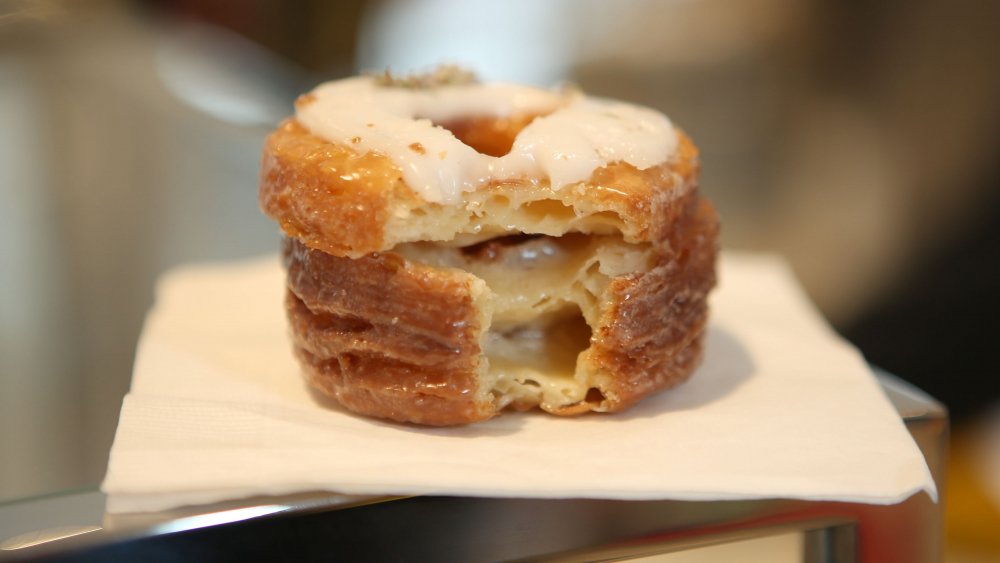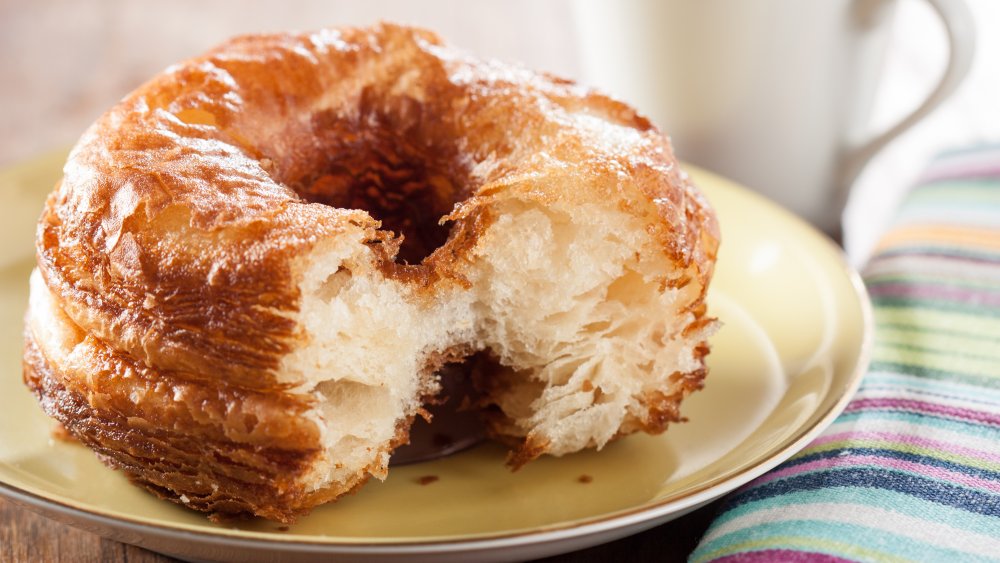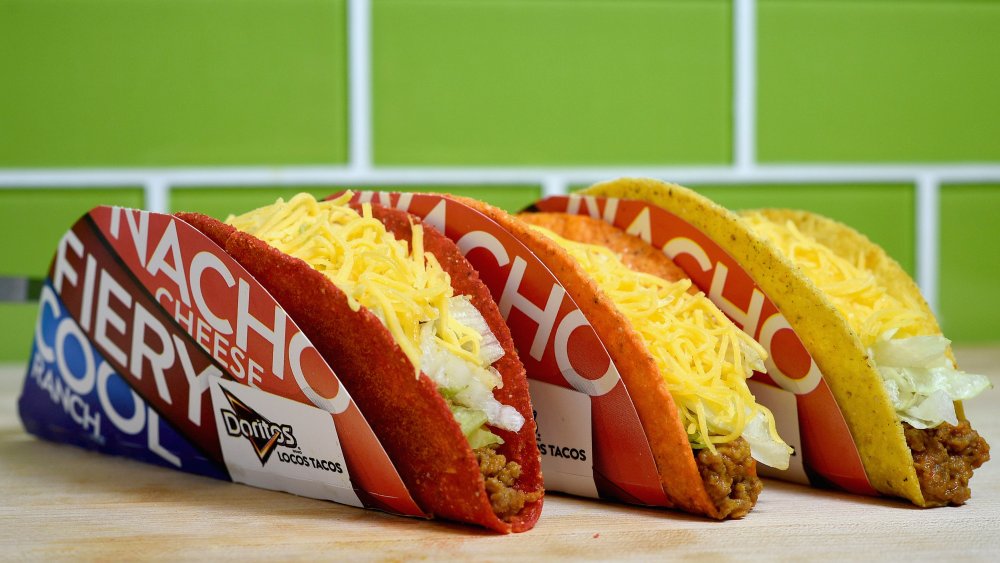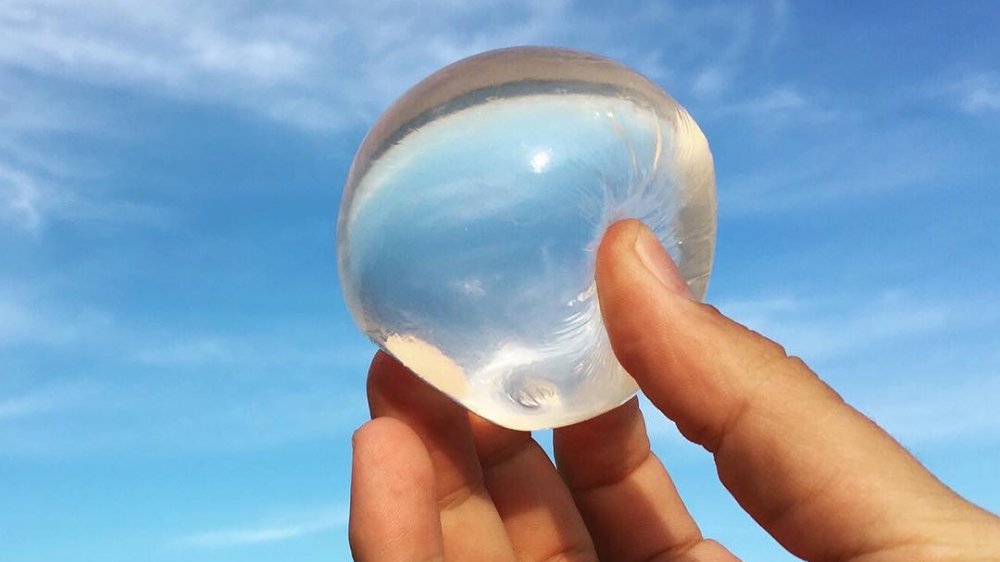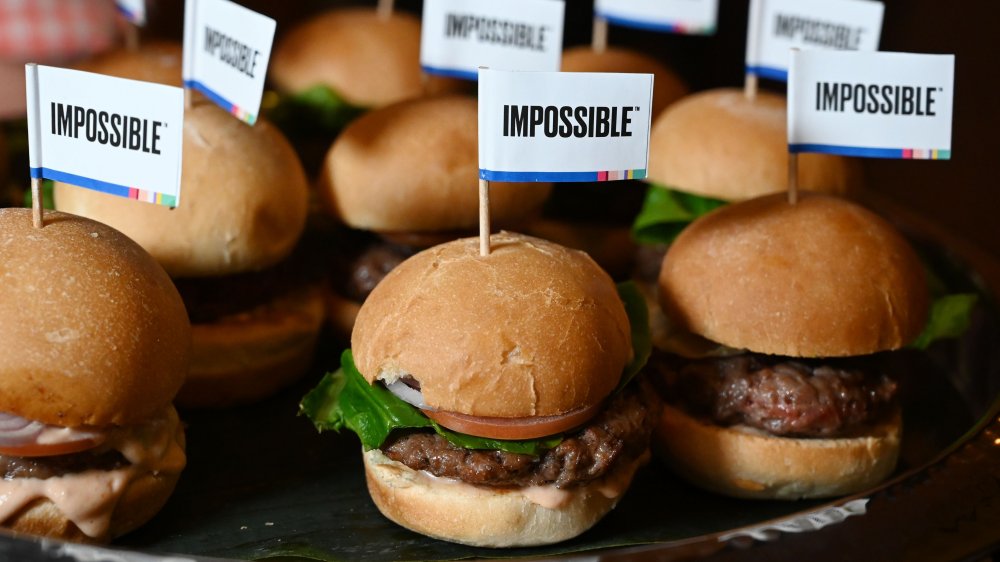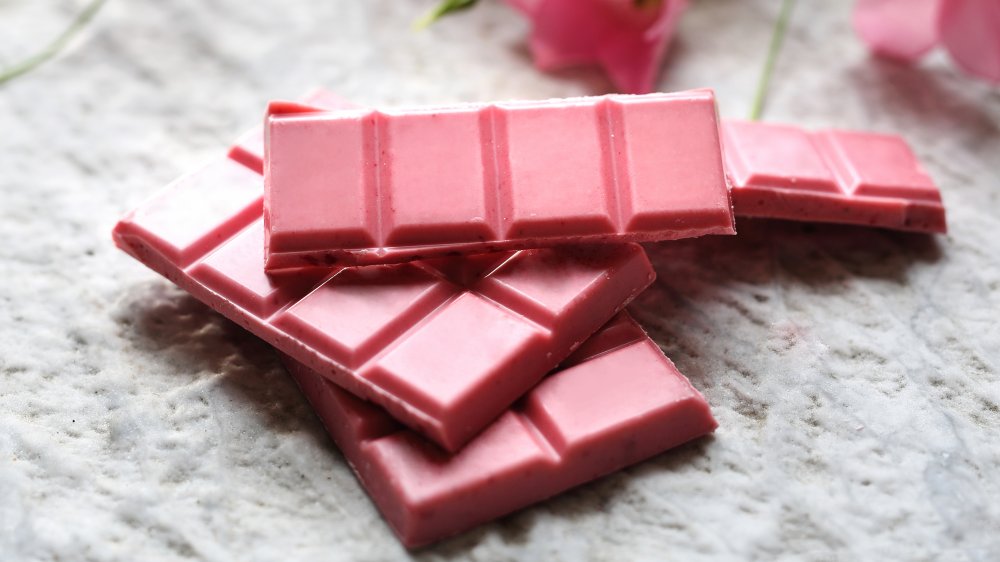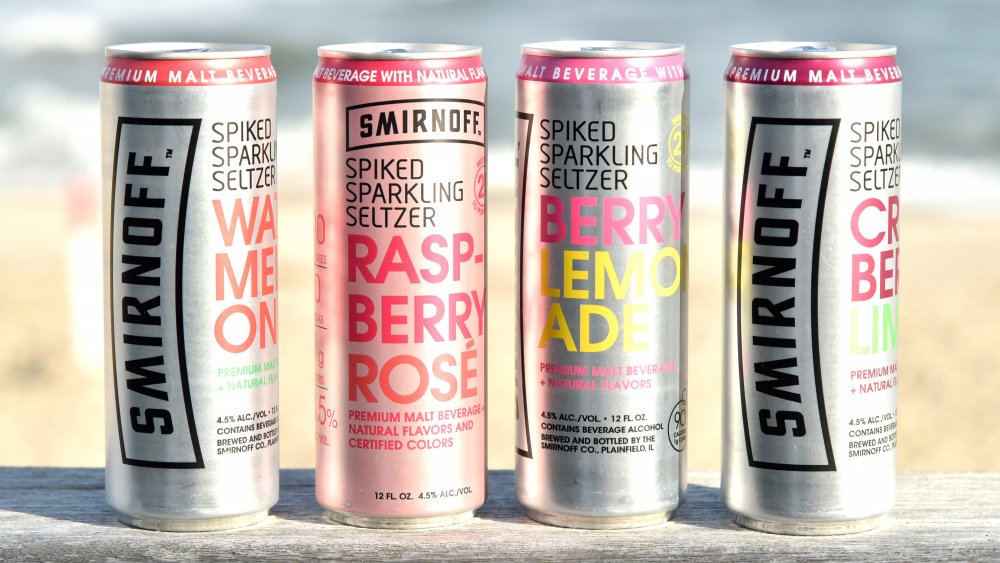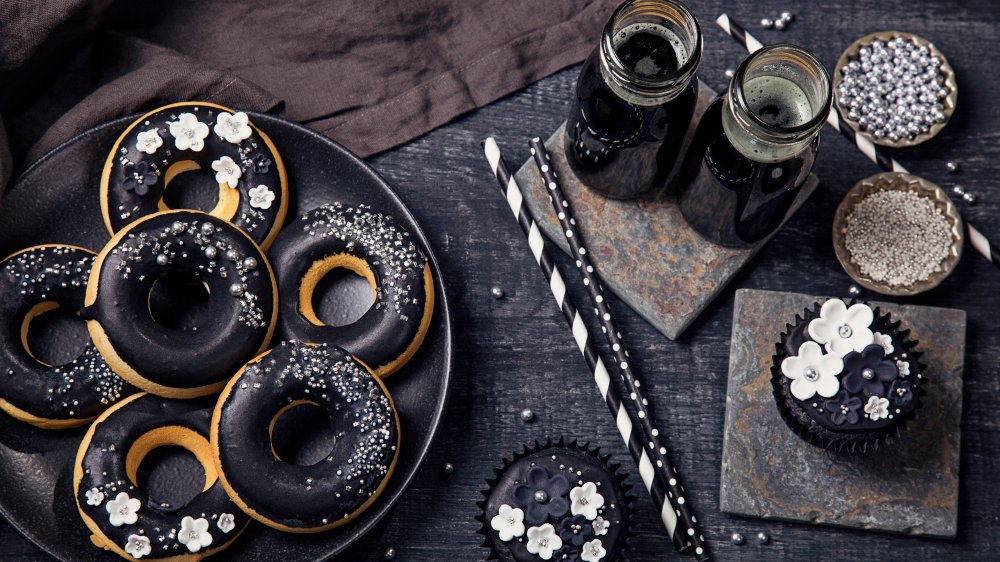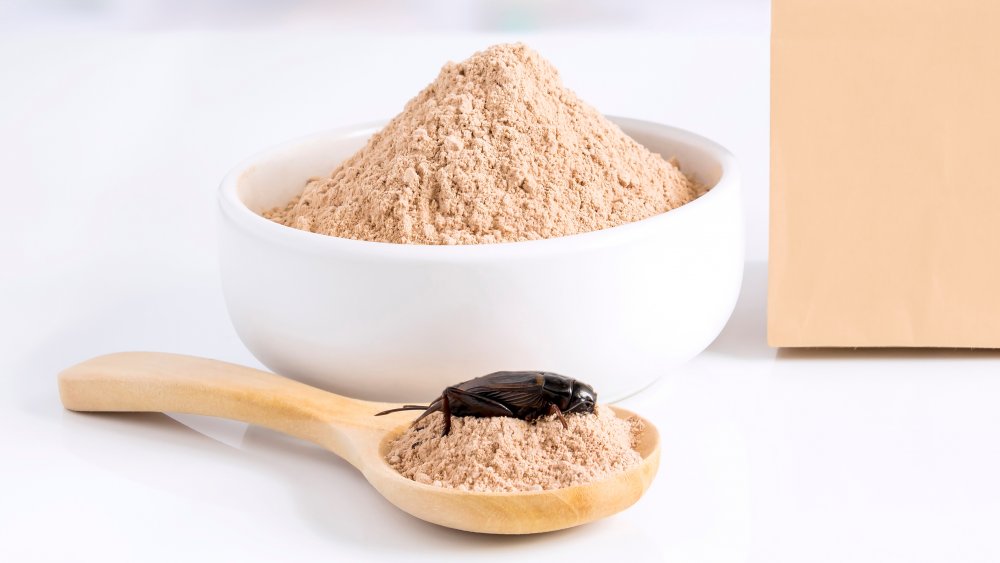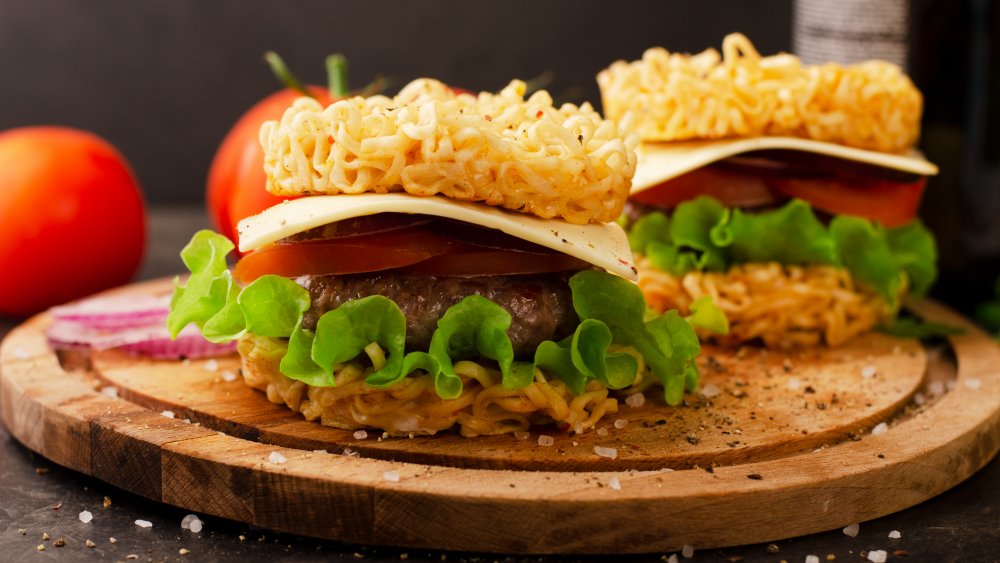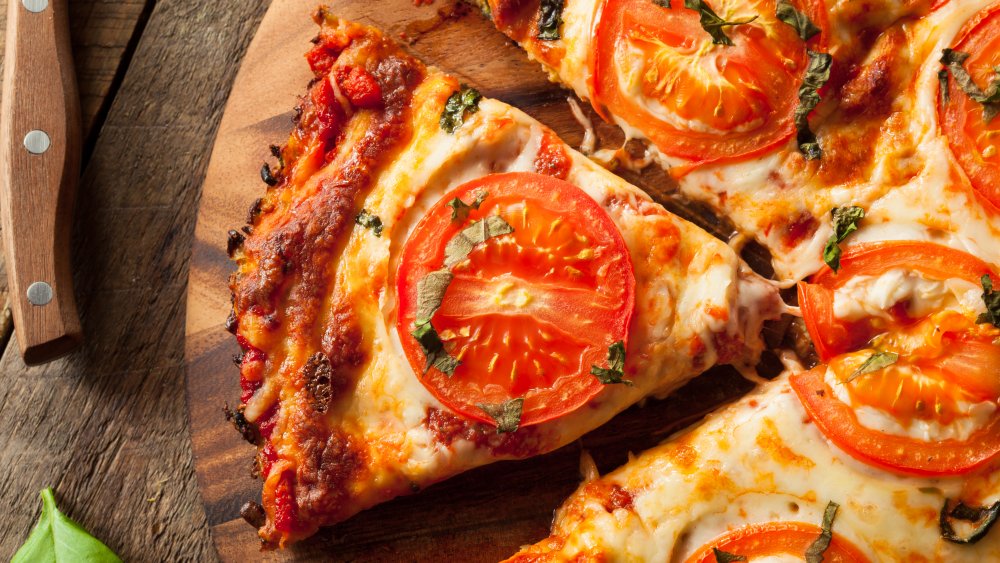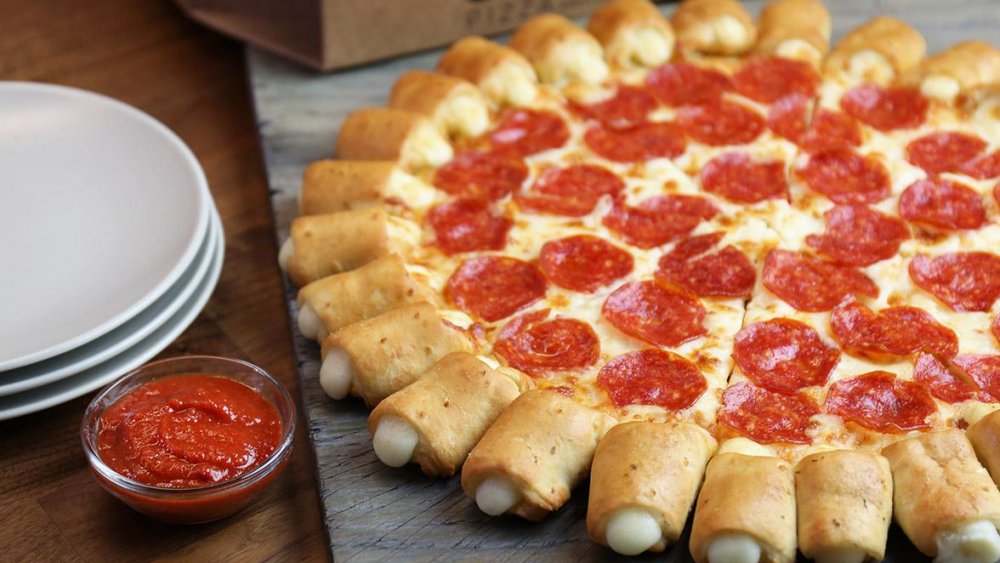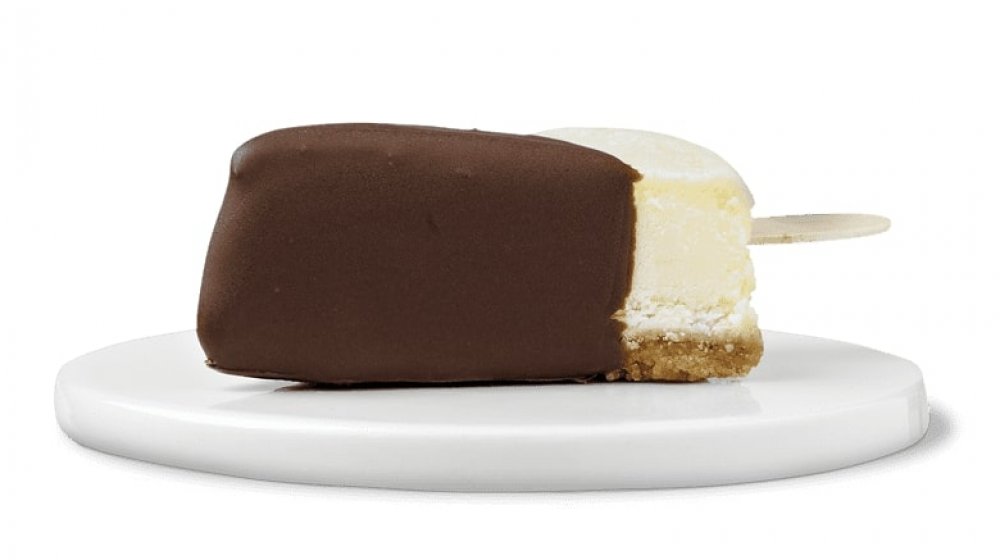The Best Food Inventions That Came Out This Past Decade
Humans are an innovative bunch, especially when it comes to food. While we're not quite at the Jetsons' level of popping a packet in a microwave and it turns into a gourmet meal, there have been quite a few fascinating food inventions that have graced dinner tables and timelines alike over the last 10 years.
While there are plenty of previously invented foods that definitely saw their time in the spotlight this past decade, there were dozens of brand new creations that shall forever be associated with the foodie decade known as the 2010s. With the rise of social media, and especially Instagram, the sharing of food and #foodporn came to prominence. No longer could food just taste good, it had to look good as well. And who among us hasn't tried to get that perfect angle of their pizza or smoothie in just the right light? Guilty as charged.
Sometimes the looks were far superior to the taste, to be honest. But these are the foods that checked all the boxes. They looked amazing, they tasted even better, and they rocked our foodie worlds. These are the best food inventions of the past decade.
Is your favorite creation among the dozen inventions we chose? Keep reading to find out.
Cronuts
There are many odes to the Cronut. The 2013 marriage of a doughnut and a croissant was the bombshell brainchild of baker extraordinaire Dominique Ansel. He needed a doughnut on his menu, but didn't know much about them... he's French after all. What did he know a lot about? Croissants.
And so an idea was born, and after over ten attempts at the perfect balance of texture and flavor, the Cronut went on the menu. Three days later it was viral thanks in part to a Grub Street food blogger posting about it. It just goes to show that word of mouth and social media really can change the world overnight. At least as far as bakery items are concerned.
If you've never had a Cronut, well, there are a lot of copycat recipes and attempts out there, but there's only one true Cronut. With only 350 available daily, you'll have to queue in the early mornings to grab a bite of one.
Despite it have quieted down over the years, even today there's usually around 80-100 people in line before the doors open at Ansel's bakery in SoHo. Or you could pre-order one online. But it'll be worth it.
It's a divine creation, and easily one of the best (if not the best) food invention of the 2010s. And to think, it all came about because someone told Ansel he didn't have a doughnut on his bakery menu. Bless that confectionery angel, whoever they are.
Taco Bell Doritos Locos Taco
This is the mash-up that forever cemented the future of brands collaborating on truly ridiculous food offerings. What may have come as a surprise, however, was that the marriage between Doritos and Taco Bell would not only be delicious, but so popular it's now a regular menu item long after its fantastical debut.
On paper, the idea seems absurd. A taco shell made out of Doritos chips? It sounds like something a sleep deprived and hungover college student might think up, but perhaps there's where the genius in it is. Of course college kids are going to want to eat these by the dozen. Of course curious adults are going to treat themselves to this — it's tacos and Doritos!
After launching in 2012, the Taco Bell sold more than 450 million Doritos Locos Tacos in the first year, and its status hasn't faltered since. The real secret behind why these faux cheese tacos are so popular may be the teeth-shattering crunch Frito-Lay demanded of Taco Bell, or the months of engineering involved to get the shell evenly coated.
Or maybe, it's just because they went viral, are tasty, and no one goes to Taco Bell to eat healthy. Of course you're going to get a Doritos Locos taco.
Edible water bottles
Single use water bottles are one of the worst things for the planet. The amount of waste they cause is especially noticeable when it comes to major races, marathons, triathlons, and other sporting events, when the ground is often littered with plastic bottles afterwards. There was no foreseeable answer to this problem — until Notpla came along, that is.
A combination of brown seaweed and plants that naturally biodegrade in a matter of weeks, Notpla became the answer to single use plastic in bite-sized bursts. First off, this is a truly useful invention that hopefully catches on more than it already has. Secondly, these just look like a lot of fun.
The future is now, we have balls of water we can drink. Seriously, how cool is that?
These balls, sachets, and packets are known as Ooho. While they were made famous by their use during the London Marathon in April 2019, Ooho has also started making waves throughout the restaurant industry when it comes to biodegradable containers for take away and delivery.
Available for sporting events, mixologists for cocktails, or anything you can really put in a packet, this is one invention that will actually help the earth alongside its inhabitants.
The Impossible Burger
Meatless "meat" has come a long way this decade.
Back in the day it was nearly impossible to be vegetarian and go out to dinner with friends, especially when fast food was the only option. If you were vegan, forget it. Long gone are the days of asking for a meat-free burger and getting something squishy and mushy akin to baby food in a patty. No, this decade saw the rise in sustainable animal-friendly options for flexitarians, vegetarians, and vegans alike. This decade saw carnivores chowing down on vegan burgers and not noticing the difference. This decade saw the birth of the Impossible Burger.
Available in grocery stores, both specialty and not, the Impossible Burger claims to be (impossibly) just like meat in texture and taste, but without, you know, any of the animal bits. Some vegans and vegetarians actually dislike it for this reason. That's how realistic it is. It gets that meat flavor from something known as heme, an iron-rich molecule that helps give meat its flavor and aroma. Impossible Foods, the company behind the burger, created a plant-based heme by fermenting genetically engineered yeast infused with DNA from soy plants.
The result is a veggie burger that tastes like meat, looks like meat, and even smells like meat. Science is crazy.
Ruby chocolate
No one is going to object to more chocolate being invented, especially when it's an entirely new type of chocolate. Bonus points if it's pretty.
Ruby chocolate checks all those boxes, and was unveiled as the newest chocolate in 2017. In development by Zurich-based cocoa processor Barry Callebaut for over a decade, ruby chocolate was the first new naturally colored chocolate since Nestlé came out with white chocolate over 80 years ago. That's quite the chocolate innovation drought, isn't it?
With a berry flavor, ruby chocolate is naturally extracted and processed from a specific bean that grows on the Ivory Coast, Ecuador, and Brazil. The color comes from how the bean is processed, and was what the folks at Barry Callebaut had been struggling with. However, lucky for all of us, they all succeeded.
The release of ruby chocolate coincided with food photography and sharing being at its height on Instagram. And perhaps that was no coincidence. The chief innovation and quality officer, Peter Boone, said the launch would take hold of the "hedonistic" indulgence of millennials, who were loving such trends as rainbow bagels and Unicorn Frappuccinos.
KitKats were the first candy to use the ruby chocolate, first launching in Asia, before becoming a global success.
Spiked seltzer
Refreshing with just a touch of a buzz, spiked seltzer exploded onto the social media scene in the summer of 2019. However, while its popularity was undoubtedly at its height (so far) during this time, spiked seltzer has been around since 2012. And believe it or not, it was invented by a beer guy.
He called his genius invention SpikedSeltzer, and copycats started bubbling up all around soon after, including the infamous White Claw in 2016. From there the rise in the slightly flavored alcoholic fizzy drinks continued to climb, with sales jumping 169 percent in 2018 alone.
One of the reasons spiked seltzer is so popular, is how it bills itself. Clean. Fresh. Pure. Low in carbs. These are all things typically not associated with alcohol, especially beer. Being able to drink and not worry about the calorie count is something that's in demand, and well, spiked seltzer definitely has the supply.
Perhaps that's why you might find more people day drinking spiked seltzers than anything else, because they don't feel like they're being naughty. It's not vodka, it's water. Just with alcohol in it — at least that's what we like to tell ourselves.
It shouldn't be too much of a surprise that spiked seltzer has made the world go crazy, what with seltzer water suddenly becoming en vogue in the past few years, too.
Activated charcoal food and drinks
Sometimes certain inventions and trends happen because of aesthetics and that's it. Throw some psuedo-science in there and you've got a bonafide viral trend. At least, that's more or less what activated charcoal food and drinks are.
Listen, we know, they're beautiful to look at. Pitch black juices, black as night cakes, and everything Batman-inspired in between. Activated charcoal foods and drinks came about as a reaction (and maybe a rebuttal) to the brightly colored food trends, as well as people peddling charcoal as a detoxifier. Sometimes (okay, a lot of times), just because something looks cool, doesn't mean you should be consuming it.
Activated charcoal's main purpose is to absorb the bad stuff, however, sometimes it absorbs and binds to things you need... like your medicine and vitamins and important minerals. In fact, doctors use it to treat drug overdoses and poisonings, because it can remove those things from your stomach before they are absorbed from your body.
And no, it doesn't detoxify your body. Activated charcoal will not bind anything beyond your stomach or small intestine. So next time, look, but don't touch — and definitely don't eat.
Cricket flour
Okay, don't make that face. Yeah, that face, the one you're making right now.
A lot of people eat bugs around the world. They're filled with protein, fatty acids, and B vitamins, are good for digestion, and are abundantly available.
Charles B. Wilson needed to find alternative protein for his diet (due to food allergies) and came across using edible bugs. So he ordered some crickets, ground them up, and well... decided to sell them en masse circa 2014, under the name of his newly founded company, Cricket Flours. Reactions vary, unsurprisingly, but a lot of people are excited about the environmentally friendly and sustainable new flour.
Wilson and Cricket Flours were the first modern company to utilize crickets as a food source, but now there are multiple types of cricket powders and flours available for alternate protein sources, as well as bars, snacks, and more tasty treats.
As more and more people look to consume more sustainable food, don't be surprised if you see cricket snacks in your grocery store soon.
Ramen burger
Ramen is delicious. Burgers are delicious. Combine them and you get a flavor that people will wait in the pouring rain for.
The Ramen Burger is the 2013 brainchild of ramen aficionado Keizo Shimamoto. How the burger and its ramen buns (which are a trade secret and shall never be revealed) came to be is a tale that noodles its way around the world and then some. Having run a blog devoted to ramen back when he lived in California, Shimamoto eventually moved to Japan to live out his ramen-fueled dreams and started as a ramen chef.
There, his ramen was so good, it inspired a short film called Ramen Dreams, which then led to Shimamoto being introduced to food personalities and burger giants. He had seen a dish that was ramen burgeresuqe in Japan, but thought he could do one better, so he got a tent at the Smorgasborg food market in Brooklyn, and debuted his ramen burger. The rest is mouth-watering history.
The ramen burger is USDA beef with a 75-25 lean-to-fat ratio that is drenched in a secret shoyu sauce, topped with peppery arugala and green onions, and nestled between two congealed ramen patties. The sauce takes five hours to make, and Shimamoto will only say the buns are pressed after boiled, but nothing more. If you can grab yourself a ramen burger, treat yourself, you won't be disappointed.
Cauliflower crust pizza
Humanity tried its hardest in the latter part of the 2010s to make pizza healthy. It really did. And while pizza will never be healthy, there is a healthier alternative to the crust most of us known and love. Make it with cauliflower, of course!
Entrepreneur Gail Becker went out on a limb and marketed a pizza made with a cauliflower crust, primarily to vegetarians and those who eat gluten-free. With sons who suffer from celiac disease, Becker was constantly searching for gluten-free options. She saw a gap and decided to fill it herself, starting out at a pizza convention armed with nothing more than an online ordered banner and a tablecloth from Target. However, it was a choice that not only resonated with vendors and consumers, it's one that launched an empire: Vegolutionary Foods.
CAULIPOWER, the pizza crust Becker created, has more than 90 percent of the cauliflower crust market (estimated by Becker), and that's nothing to balk at, especially as cauliflower seems to be one of the super foods of 2019.
Pizza Hut Cheesy Bites Pizza
Pizza is practically a food group of its own in the USA. We love it. In fact, Americans eat 3 billion pizzas a year. So that's roughly 30 billion pizzas this past decade. 30. Billion. That's a lot of pie.
We wonder, how many of those are Pizza Hut's Cheesy Bites Pizzas? We reckon it's a very large percentage. This pizza creation involves a normal pizza, but the crust is a carousel of cheese filled bread balls, ripe for the picking. That's what you're supposed to do after all, rip them off. It's perhaps not the most ergonomic pizza, figuring out how to eat it has perplexed more than one person, but the novelty of it made it popular and well loved by pizza heads everywhere. The crust is a mix between breadsticks, regular pizza crust, and mozzarella sticks (without the whole being fried bite).
Perhaps this was Pizza Hut's bid to try and get more people to eat its crust, or perhaps they just really loved cheese and figured... why not? Whatever it was, people kept coming back for more, and mourned its disappearance once its limited run was up. However, this story has a happy ending. The pizza came back briefly in the summers of 2018 and 2019, reminding everyone just how much of a fan favorite it is.
It'll probably be back next decade as well. Can't keep those cheesy knots away for long.
White Castle Cheesecake-on-a-Stick
Renaissance and state fair goers have been eating all sorts of foods on a stick for decades, it's sort of what you do there. However, when White Castle came out with their fudge-dipped cheesecake-on-a-stick in 2012, life changed for many.
Alright, perhaps that's a bit of a hyperbole, but you cannot deny that having cheesecake on a stick easily accessible whenever you want it is one of the greatest food inventions of the decade. Portable cheesecake. Covered in chocolate.
We're into it. We're also into the price. At just 99 cents in some locations, the three-bite cheesecake is a bargain. Not too filling, considering its size, but just big enough to satiate any dessert cravings.
In 2018 White Castle did one better and made their cheesecakes available for mass consumption by launching a frozen version in some United States grocery stores. The store version is a strawberry cheesecake, but it also came along with brownie-on-a-stick, peanut butter-pie-on-a-stick, and butter cake on-a-stick. From one great thing comes a whole slew of other delights.
